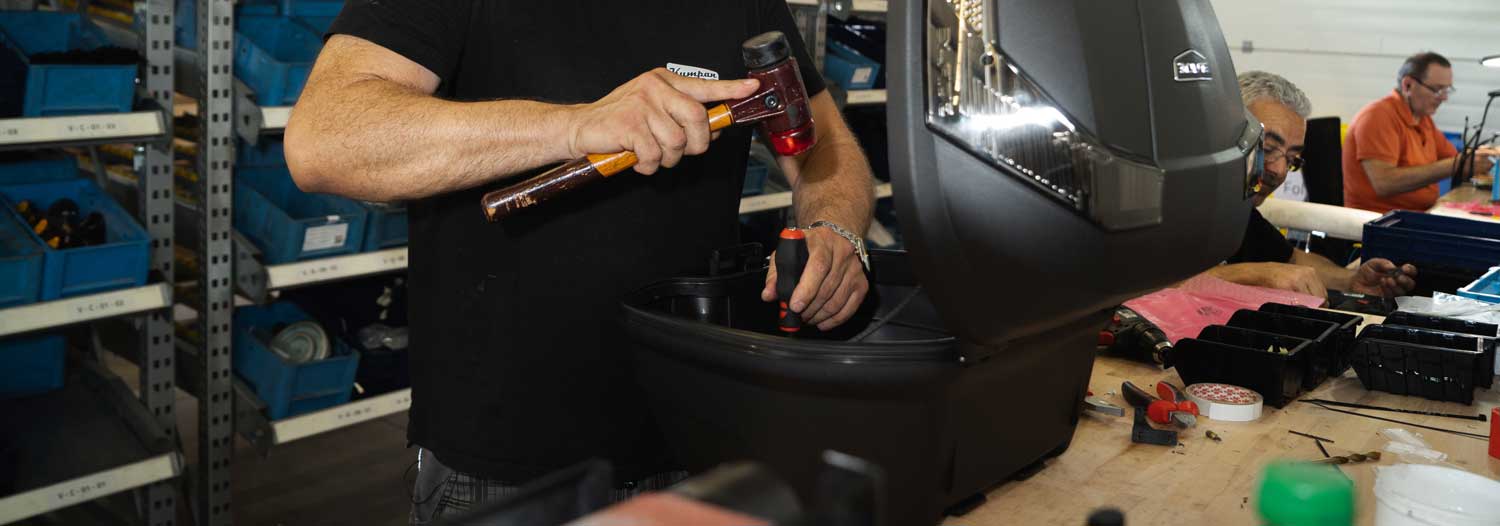Offshore manufacturing in Mexico has become increasingly sophisticated over the last few decades as companies have flocked to the country for its low labor costs, reliable transportation infrastructure, skilled workforce, numerous free trade pacts and close proximity to both the U.S. and Canada. Automotive is a prime example of how far the industry has progressed in a relatively short time.
Since 2010, approximately one-third of all new auto-related factory spending in North America - $24.2 billion - has been on automaker plants in Mexico, as per numbers from the Center for Automotive Research. Popular car models ranging from the Ford Fiesta subcompact to the Ram ProMaster van are now produced in the country.
The rapid development of the Mexican automotive industry has also had the spillover effect of boosting local logistics providers, which have further kept costs low for manufacturers and streamline their supply chains, according to Penske. That said, there are still significant logistical challenges to manufacturing in Mexico, and you should keep them in mind as you plan your business relocation:
1. Truck and Rail Capacity
Overall, Mexico has excellent road and railway transportation. In 2014, PricewaterhouseCoopers estimated that 90 percent of the country's roads met international quality standards, while its rail system extended through nearly all states and in most regions had a per car capacity of 130 tons.
However, the recent acceleration in manufacturing activity in Mexico has at times pushed truck capacity to its limit, creating a mismatch between supply (number of available vehicles) and demand (amount of goods requiring transport). Matt Hamson, the CEO of Coronado Logistics, told SupplyChainBrain that 75 percent of trucking equipment in Mexico was owned by family operators with fewer than 100 trucks in their respective fleets.
This means that northbound shipping rates often spike as a result of such supply constraints. The U.S. Department of Transportation estimated that the number of trucks crossing the border at Laredo, Texas, rose 6.3 percent year-over-year between May-August 2013 and 2014, fueling increased transportation costs over that time.
The good news is, as Penske noted, the logistics industry is still developing in Mexico, and has a high ceiling for growth. Moreover, Mexico transports a relatively small share of all of its cargo - perhaps as little as 12 percent - via rail, compared to 42 percent in the U.S. and 60 percent in Canada. There is still plenty of room for rail growth to alleviate the strain on truck fleets.
2. Complex and Unclear Regulations
Trade agreements such as NAFTA have been instrumental in streamlining the cross-border exchange of goods, but they have hardly ironed out all of the kinks that could cause trouble for manufacturers. For example, there is a disparity in truck weight limits between the three nations party to NAFTA.
Inbound Logistics outlined this issue in 2013, explaining that while Mexico and Canada both allow trucks to carry 25 metric tons apiece, the U.S. sets the limit at only 20 metric tons, in part to preserve its extensive national freight industry. Complying with U.S.-specific regulations costs logistics companies operating in Mexico millions of dollars annually.
Beyond the truck issue, there are numerous possible complications that can affect border crossings. Hand offs between truckers and custom brokers can be awkward since the two sides may not have correlated data. Liability is also a burden for Mexican brokers, who can face penalties for incorrect classifications and duties.
3. Properly Managing Inventories and Forecasts
For North American manufacturers, Mexico has a clear-cut advantage over China in particular when it comes to estimating lead times for products and controlling any corresponding inventory. Whereas products manufactured in Asia may require weeks or even months to account for their lengthy supply chains, ones made in Mexico have greater margin for adjustment.
Despite this specific edge, manufacturers must still be mindful of the inventory and product pipelines they have in Mexico to avoid glaring mismatches between initial forecasts and real demand from customers. Issues such as the transportation and regulatory bottlenecks mentioned above, as well as possible hiccups with security or raw materials procurement, require prompt attention and adjustments to plans.
Navigating Mexico's vast manufacturing economy is easier when you work with an experience leader in business portability. The Offshore Group can help you find the ideal site in Mexico and take care of everything you need to get your operations off to a sustainable start. Contact us today to explore your options for nearshoring to Mexico.
Subscribe
Sign up and stay informed with tips, updates, and best practices for manufacturing in Mexico.






